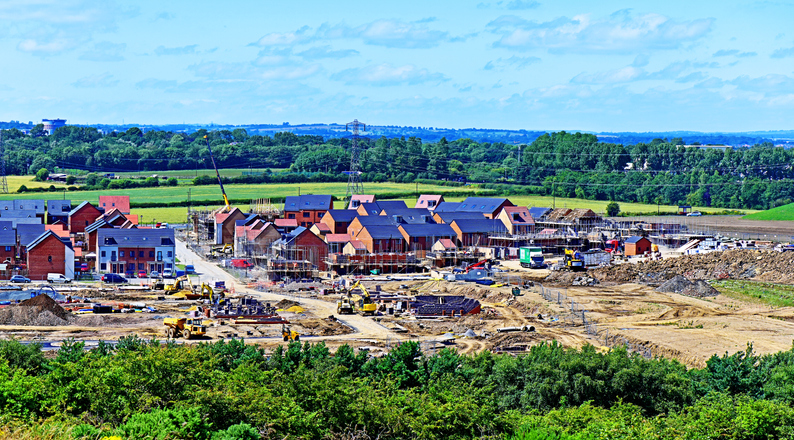Releasing and varying restrictive covenants – the Supreme Court has spoken
The Supreme Court has passed judgement on 6 November in the much awaited Millgate Developments/Alexander Devine/Housing Solutions case relating to s.84 LPA 1925. Michael Higgin, who leads our Strategic Land Contracts team, has read the judgment and explains.
This articles follows our preview and case summary, published last week (see related articles below).
The ‘law bit’
The heart of the issue in the Supreme Court appeal was the ground for the variation or discharge of a restrictive covenant against development on land in s.84 of the Law of Property Act 1925 relating to “public interest“. The Supreme Court highlighted that the section has two stages: the first is a “jurisdictional stage“ where one of the five grounds must be proven, for the Upper Tribunal (UT) to have jurisdiction to deal with the application – in this case the newest and fifth ground of whether the covenants are contrary to the public interest because they impede a reasonable user of land. The second is a “discretionary stage“, where it has to be assessed and decided whether the restrictive covenants should be modified or varied.
The Jurisdictional Stage
The Court of Appeal had placed notable weight on the “cynical breach“ of the restrictive covenants by the developer, Millgate, when allowing the covenant beneficiary’s appeal and striking down the release of the covenants. However, the Supreme Court found that the test of “contrary to the public interest“ needs a narrow interpretation, when assessing jurisdiction. Importantly, s.84(1A) gives authority to discharge or modify a restriction if:
“the restriction … is impeding [some reasonable user of land]… [that] is contrary to the public interest“.
This is looking only at the potential conflict between the proposed use and the covenant beneficiary’s interest and whether there is “public interest“ in making a change to the restriction as a matter of land use. As Lord Burrows, who gave the judgement said, “Two competing uses of the land are therefore pitted against each other“. It is a narrow question: the continuance of the effect of the restriction on the user of the burdened land needs to be found to be contrary to the public interest (and in this case, the existence of 13 already-built affordable housing units was agreed to be both reasonable and in the public interest). The motive or behaviour of the applicant is not material to that. It is not the wider question of whether it is “in all the circumstances of the case … contrary to the public interest to maintain the restrictive covenant”. Lord Burrows uses here the word “maintain”, but the dichotomy is, we suggest, clearer if he had said that the prohibited question was whether it was “in all the circumstances of the case … contrary to the public interest to release [rather than ‘ maintain’] the restrictive covenant”; or otherwise to say “in the public interest to maintain …” i.e. to disregard at this stage in the process the public interest in denying the developer a benefit or profit from the variation or release.
The Supreme Court drew attention to s.84(1B) of the Act, which goes on to say that in determining that question of public interest and jurisdiction, the UT would take into account “the development plan and any declared or ascertainable pattern for the grant or a future of planning commissions in the relevant areas, as well as the period at which and context in which the restriction was created or imposed and any other material circumstances.“ This jurisdiction test is therefore based in the real context and not the applicant’s motives. Here the UT had had due regard to the fact that planning permission had been granted for the house-building.
Lord Burrows noted that none of the other four grounds for these procedures allows the conduct of the applicant to be taken into consideration, so this is consistent with that. The wide range of potential applicant behaviour meant, he said, that it is “ideally suited to being considered at the discretionary rather than the jurisdictional stage”.
The Discretionary Stage
Having said all that, once the Upper Tribunal‘s jurisdiction had been invoked, the conduct of the developer became highly relevant to the “discretionary“ stage of the decision.
An appeal court can only review the application of the law to a case, and not re-assess the evidence that the Upper Tribunal considered. Lord Burrows therefore focussed on the principles in issue. The court would not rule that a “cynical breach“ by the applicant would in itself defeat the jurisdiction to apply, tempting as that was, as such a principle would need to be absolute, which would unhelpfully tie the hands of the UT, and if discretion was brought into it, one could not identify an error of law under which to ever challenge the UT. Lord Burrow therefore identified two “omitted factors“, that the Upper Tribunal should have considered.
- Firstly, that Millgate had other land upon which it could have obtained planning permission and built the affordable housing, which would have respected the rights of the charitable trust. The entire land-use conflict could have been avoided.
- Secondly, if Millgate had made a timely application under the Act before starting to build, it would not have met the “contrary to public interest“ jurisdictional ground, because it could have obtained planning permission on other land not subject to the restrictive covenants. I interpret that there was no essential need for this particular bit of land to be so built upon, so the case would not have been made out: I ask, what if they had had less land area to play with?
The pressure put upon the Upper Tribunal by Millgate driving through the building work to completion in the face of objection was severely criticised. The Supreme Court identified that while this factor had fed into the question of “jurisdiction” in the UT (and did not defeat the application, as a result of which compensation of £150,000 was paid) , it did not seem to have been brought back into consideration by the UT when using its “discretion” to make an order. These two omissions amounted to an error in law and led to a dismissal of the appeal and so the Court of Appeal’s reversal of the covenant discharge stood.
So, what next?
The Supreme Court could have referred the matter back to the UT to re-make the decision. However, there is a statutory power for the Supreme Court to re-make a decision (in the same way that the Court of Appeal had done previously). While the Court of Appeal had held that the UT did not have jurisdiction to allow the application, the Supreme Court held that they did have jurisdiction, but then erred in law by failing to take into account the two omitted factors mentioned earlier. Given that five years have passed since the application was made, and the interest of all parties in bringing things to a conclusion, the Supreme Court again set aside the UT decision and refused the application for discharge and modification.
It is therefore now up to the Alexander Devine charity trust to decide what to do next.
The final paragraph of the Supreme Court judgement refers to the trust having the ability to apply for a prohibitory injunction to stop the 13 housing units being occupied, or for a mandatory restorative injunction requiring the houses to be removed in part or in full. Accordingly, their claim could well include an account for profits, as well as “negotiating damages“. As Millgate had a pre-agreement to pay for alternative social housing for £1.6 million, that they did not implement because they built in this location instead, a material sum could well be in play, which the charity will no doubt make excellent use of. The terms of a private settlement (if there is no demolition) may eventually filter out in a few years’ time through the charity’s published accounts, and developers and landowners alike will be interested to see what occurs.
The judgment says that Housing Solutions have an indemnity from Millgate in their purchase contract. They will be looking carefully at Millgate’s company accounts to be sure that they are good for the money, as any indemnity is only ever as valuable as the giver is strong.
Lord Burrows correctly closes that “it is only realistic to recognise that the impact of this decision will plainly be to strengthen the Trust‘s hands in relation to any financial settlement of this dispute.“.
Note: the second paragraph of the “Jurisdictional Stage” section was updated on 16 November 2020

